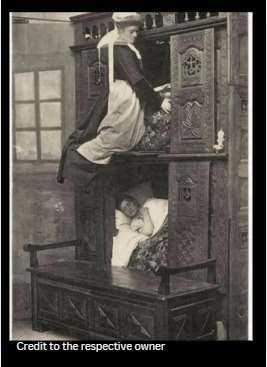In the harsh winters of northern Europe, warming a home was no easy feat. Fireplaces helped—but as soon as the flames died down, the cold would creep right back in.
Then someone—lost to history but full of practical wisdom—came up with a clever idea: the box bed.
Picture a bed that doubled as a wooden cupboard. Not just a place to lie down, but somewhere you could tuck yourself in and seal out the chill. These beds featured wooden panels, doors, or curtains that could be closed fully, creating a cozy pocket of warmth long after the fire went cold.
The concept was simple: trap your body heat in a small space, much like a modern sleeping bag. And it worked beautifully.
Box beds became popular from the late medieval period through the 19th century, especially in Scotland, the Netherlands, Austria, and Scandinavia. Families often built them right into kitchen walls or alcoves. Some even had several compartments—one for adults, one for children, or occasionally space underneath for livestock.
This was before electricity, when bedrooms went unheated. If it was cold outside, it was cold inside too. But inside a box bed, wrapped in thick blankets and surrounded by carved wood, people stayed warm.
These were more than just beds—they were ingenious.
For centuries, they helped people endure long, frozen nights and made winter a little more bearable.
